Rummaging the computer in the interests of organizing its digital chaos, I came across this, from around 1995. It is a Q&A done long distance, by email. I don’t recall for whom, what publication, or if it was ever made public or not. But scanning it led to reading, and as much of it seems pertinent to today’s world, I thought it might be nice to put it out here.

A question as to why so many of my films have a death in them, and why?
1: Death: Hmmmm…. Is there a constant reference to death in my work? I guess from some view the answer would have to be “yes” since more or less most of them either have a death (or two or three), or talk about death in one way or another (even Bell Diamond touches on it), or… Actually one shot in Berlin, Liebesfall(e) (1), doesn’t, but… Why? Because I try to make work about life, and the thing that is significant about life is that it is finite – it lasts a while and then stops. For humans, who are conscious of this, it is probably one of the most fundamental building blocks of consciousness, which is usually socially suppressed, manipulated in various ways, or denied (as in religions that promise more life later), and taken altogether usually leads to the making of socially imposed death: wars, executions, murders, etc. So for something to be about our lives, if it is to be meaningful, it has to include this fundamental matter. That’s one way to look at it. Another could be that I have some kind of problem with it, that it is a pathology. Certainly in my daily life I seem to make many more comments, jokes, reflections and so on, on its presence and reality in our lives than the people around me do. So maybe it is my sickness. Or, maybe, it is a “healthy” way to perceive things.

 Bell Diamond
Bell Diamond
And what do I think about “death?” The same way I guess I think about life: we are here, so it seems, as a kind of statistically unlikely accident — a planet circling a star (recently our astronomers finally came up with a kind of proof, the tentative discovery of at least one other star – a pulsar – encircled by some planets, though it seems rather obvious that this physical phenomenon would be commonplace in the universe) of a certain kind, at a certain distance, under certain conditions, times, which allowed (a reasonable speculation) some silicon and carbon atoms in the form of a clay (so the Bible says, no?), to rub against itself in a manner that gave rise to very very simple animate organisms which then reproduced in a myriad of ways, following more or less Darwin’s observations, leading to, among others, we humans, who in turn speculated on it, on our placement in the universe, and at the same time, clever as we are, learned similarly to manipulate physical matter in such a way that we have machines, hydrogen bombs, laser discs, and so on. So life got here. And life – yours, mine, everyone’s – will go away with an equal arbitrariness: we will poison ourselves off the planet with over-consumption, the sun will fizzle and die, a big meteor will impact, some yet unknown celestial burst will send out a cascade of high-energy rays and… And who knows, except that for certain this little planetary petri dish will surely evaporate, and we will go with it, whatever our efforts to migrate to some other place. And the universe will care less. As it cares less about the doubtless hundreds or thousands or millions of similar “life” experiments happening elsewhere in the universe. By this measure, what we think of as “life” and “death” doesn’t really mean much, and such is what I think. On the other measure, the here/now one which we each live, it matters emotionally, it matters biologically (we are designed to survive as best we can, and if we weren’t we would have disappeared long ago), it matters “personally.” I, like most of us, have a built in revulsion of a kind at the presence and vision of death: it’s a deeply programmed kind of survival response. On the other hand I have an intellectual indifference, a kind of detached, well-this-is-what-life-is, this temporary organic set-up which is very very complex, resilient, but finite, quite limited, wears out, and finally drops dead. Naturally or not; by accident or design. And I guess, in various ways, I implant this sensibility in my work, the impact of this primal instinctive flight from death in the name of survival conjunct with this consciousness that in a way it matters not at all, it all being a kind of grand joke, an accident, which it is our fate to confront. I suppose it is this quality which some critics refer to as the sense of detachment, or coldness, in my work. Which I find vaguely amusing since I’d say that most of my films are quite emotional in their impact, they provoke you to feel, and to feel as deeply as flickering shadows on a wall can. I am an ironist.

A question about what being on the road means to me, and how it materializes in my films.
2. The Road. Well, I guess, yes, I am on-the-road, maybe, except for truckers and sailors and airline pilots, etc., rather more than most. I have been all my life as my father was in the military and as a child I was uprooted once every 1 – 5 years, moving from Chicago to Georgia to Japan to Georgia to Kansas to Italy to Germany to Virginia, in the space of 12 years. Moving got bred into me. And I have been moving ever since, like a bad habit. Or maybe a good one. Or maybe it is not so simple as that.

Europeans have the idea that Americans “don’t belong” at least not in their terms. We Americans have the history of moving, from this house or this city to that, and around this is built a kind of theory of alienation, which probably has some truth to it. My trouble is not that I feel that I don’t belong, but that I belong too much – not just to America, but to anywhere I go. Culturally I’m “American as apple pie” in many respects, but in others I’m totally not. I don’t believe in any kind of nationalism or anything like it, nor about romanticizing “other” places. And I suppose this shows up in my work, wherever it is set. Ironically, it is very important to me to set my work in real places – to find a way to show in filmic terms some aspects of what a place is like. Not just how it looks, but how it feels, what it does to its inhabitants and what they do to it. I’m a regionalist of a sort, just that as it were I don’t really come from anywhere. Instead I go to “wheres” and camp in them, become a part of them, do my work, and leave.
A question about painting and painters, as I reference them sometimes in my work.
3. Painters. Yes, well I am very interested in certain painters, and learning about more and more. Good painters teach you to see – not just visually, but spiritually, beyond the surface of things on into things. In Angel City there’s Frank Goya, yes, a reference to Francisco. The narrative analogy is that Goya was a court painter, a kind of aesthetic prostitute, doing portraits for money. He was good at it. And he also hated it, and finally withdrew from that. And he had a dispassionate clear-eyed view of the world he did not flinch from, even if maybe finally it made him a bit mad. So one can see sensuous, passionate nudes, and stiff court portraiture, and Los Caprichos and the Disasters of War, and finally the black paintings, all from the same artist. He was amazing. In the film Goya is also a whore, a hired “dick,” working as usual for the powers that run things. But he’s also clear-eyed and goes to the truth. Another aspect of the name is that if you shift one letter, it becomes A Frank Goy. Goy is Yiddish for a non-Jew. Goya is investigating Hollywood, which, whatever one thinks of it, was founded by and is pretty much run by Jewish men. Goya’s view is, uh, critical about the nature of Hollywood. Mine too, if not for that reason.


Rembrandt Laughing was a kind of posthumous gift to Rembrandt, who, so his self-portraits (the only paintings of his I really like excepting some other portraits) suggest, was far from happy as time went on. The film is a respectful suggestion to lighten up. But otherwise the film scarcely draws on Rembrandt. With All the Vermeers in New York, I had begun to really look at painting, with Vermeer being my hook. He is a fantastic painter – a colorist of sensuous depth, an observer of the keenest eye, a psychologist and portraitist of the highest order. I look at his paintings again and again, learning anew with each viewing. Something only the best painters can offer. For the film, it was not only the sensibility for light which I learned from, and used in shooting, but also the way in which Vermeer (like Edward Hopper) takes “reality” and then clearly strips it of extraneous elements so only the essential remains, convincingly “real” though carefully orchestrated, organized, and unreal thereby. Vermeer goes for the essence of things, be it a room, a city-scape, or a woman’s face, and almost always with a subtlety which hides the origins of his effects. It was this which I tried in All the Vermeers (and continued to pursue, with very different visual qualities, in The Bed You Sleep In.) Other painters of current special interest to me are Monet, Manet, Uccello, Lautrec and Degas, Whistler, Eakins, Corot, the sketches of Constable, Emil Nolde, and many others. And my next film will be called Albrecht’s Flugel (2) (Albrecht’s Wing – Albrecht being Durer). I am in fact not so interested in his oil painting, but in his water-color work of nature. And The Bed You Sleep In was visually rooted in – along with the mentioned Vermeer/Hopper reference – also the American painter Richard Diebenkorn (Ocean Park series) and the photographer Joel Sternfeld. This is not to say there is any effort to copy, but rather they were things studied for a certain visual intelligence.



A question about music in my work, and working with composers.
4. Music: I have worked closely now with two composers – Jon A. English (Bell Diamond, Uncommon Senses, Rembrandt Laughing, All the Vermeers in New York, Frameup, and Uno a te…) (3) and Erling Wold (Sure Fire and The Bed You Sleep In) (4). While Jon and Erling are quite distinctively different in musical terms, our working processes together are quite similar. Within the filmic frame I usually have quite clear thoughts as to musical qualities, needs, sometimes instrumentation for the music, and take an active part in forming the musical framework. On the other hand, respecting them as artists, I like to leave as much freedom as possible for them to write, and indeed I shoot the films, from the outset, in a manner that leaves large open spaces ready to receive or participate with the musical element. Examples range from the abstract blue footage in Rembrandt Laughing, to the columns in Vermeers, to the early yellow-stripe road shot in Sure Fire, to the cafe shot in The Bed You Sleep In. From the outset, in filmic terms, I begin, not thinking of a specific music, but rather knowing that music will be an essential element in a cinematic sense, and thus I think and direct and shoot with this in my consciousness. In terms of relationships – both Jon and Erling are friends, and work with them is casual, comfortable. I am unschooled in music and hardly speak a musician’s language but on the other hand I have an overall sense of various arts, and can discuss in general terms, enough to convey my ideas. And I am totally open to changing things around, putting in music where I hadn’t thought it was needed, shifting things a bit; and both Jon and Erling have been willing to let the editing knife slice, re-arrange, shift or delete things they’ve done. Jon is unfortunately quite ill these days. And Erling will be collaborating on the Wien film, working with a large symphonic scale group of musicians.
 Jon A. English in Rembrandt Laughing
Jon A. English in Rembrandt Laughing
A question about my use of texts used on screen, on their own or over the images.
5. Texts on screen: In general it is my interest to make things with multiple layers of content, of meaning. I like to have things within my work run counter-point to each other, to establish spaces which suggest, but do not articulate, this in the hope of provoking the viewer to think, feel, to fill in those spaces with something active within themselves. So sometimes I find the use of texts, of various kinds, whether in voice-over, or in on-screen writing, to be useful for this: you are watching an image, maybe with music, and with it arrives some words, usually rather detached from any immediate significance. I think usually this prompts the viewer to look again, within themselves, to seek something more than they had been looking for earlier. The use of literary or philosophical quotes is, I suppose, to anchor the films in a historical context – as the quotes in Rembrandt Laughing refer to Kierkegaard, Vermeers to Proust, and elsewhere to others. Or maybe it is just a conceit…

A question about working with writers, when I do so.
6. Italy/co-writer: Actually I have in various ways worked with co-writers previously – whether through the actors, who sometimes have “written” (literally, on paper) parts of their roles, or through improvising with acting. And in Last Chants for a Slow Dance there was a co-writer (Peter Trias, died 2006) who did a bit of the writing. But usually it is the actors. With Uno a te, Edoardo Albinati (5) collaborated with me in part because my Italian would scarcely let me “write” anything much more than “ciao” and in part because I felt it would be good to have someone intelligent, aware, Italian, to work with in checking my ideas and thoughts about Italy. We worked very comfortably together – I might write something which he’d translate, and check with me if there were things he simply thought wouldn’t work in Italian cultural terms. And I would say, well here’s an idea for a scene, write something up. And then we’d go through it, and I might change it a bit, do some editing, or soften the writerly tendency to clarify things I’d rather leave unclear. Edoardo was quite understanding of the process of jettisoning things for cinematic reasons, and sat in on some of the editing, helping to pare things down, move things, and so on. I fully expect and hope to work with him again, hopefully on an ambitious 3-film Roma project.
A question about the political situation at the time.
7. 80’s/90’s: I suppose I am a pessimist. Or perhaps a realist. The 80’s, in my view, were a kind of catastrophe. They represent the victory, however momentary it proves to be, of market capitalism, to which it seems all else has surrendered. Market capitalism is a disaster in almost every way except, for the moment, in providing “goods,” though it is a profound embarrassment to discuss at whose cost. The 80’s are arriving just a little later in Europe, in the form of Berlusconi victorious in Italy, and so on. Everyone wants a free ride, and so it is offered. I imagine though that the vast excesses of American-prompted “free trade” will beget its due backlash, whether in the form of deeper, more profound modes of religious fundamentalism as in the Islamic world, or recoils into primal regional groupings based on language, cultural roots, and so on. I feel like the world is headed into a new kind of feudalism, with small armed cities, with quasi-private police forces, people banded in small defensive groups, trying to hold off others. The economic inequities of American-style market-capitalism seem likely only to provoke different kinds of active opposition, be it violent, sabotage, or…. Well, history is a cyclical matter it seems, so now as the disruptions of so-called stable, familiar patterns get harsher, it seems we are in for a time of the “hard man,” the desire for a “strong leader” who will whip the unruly world into order. We only too recently saw what this all leads to and I won’t in the least be surprised to see it happen again, as it already appears to be happening in Italy, in Germany, in …. So what do I see of the 90’s? More of the same, with the explosion in population, subsequent depletion of world resources (we all want to live in high-tech, consumer-fetishist fashion, so it seems), which very quickly will only heighten the clashes of economic divisions, as it comes down to a more primal matter of simply who-gets-to-eat, who-gets-to-breath. I am not optimistic, and as I travel the world, I get less and less so: there are too many of us, mostly wanting the same environmentally costly things – we have about depleted the oceans of fish, and are on the way to getting down to the end of forests, of killing off this or that species per day. We will pay the bill. But that I think is the ironic fate of the species – we are so damn clever, and we are so primitive, all at the same time: so while we can sit and not know what we are doing, we can’t stop ourselves from doing it. I’m 51 now, and likely I will die before the really heavy plagues, famines, wars come along to reduce our numbers and issue a Biblical-level lesson in humility. If I am lucky.
About future projects in mind.
8. Future projects: If the financing holds up, Albrechts Flugel, in Wien, in the fall. More than double my last biggest budget, a whole $600,000. And maybe finishing up some old films left sitting. And perhaps, if I can get the funding in line, a 3-year/3-film project in Rome. (6) And meantime I am shifting, seriously, to take up painting, and, if my life allows, just a little bit of architecture. I am, quite seriously, very very tempted to quit making films as the climate in these days has reduced it to an exercise in futility. It is sad – as a medium it is so rich in possibilities for learning, for seeing, for broadening the social capacity to understand our predicament; and (ironically) precisely those rich qualities make it perfect for a vehicle for the most mindless of drugs. And money/power runs the show, so indeed it is the mindless drug peddlers who win the game. It is tragic, but so. And in human history it has always been like that.

Footnotes:
(1) Shot, never finished.
(2) Partially shot, abandoned owing to utterly crooked producers (Prisma Films, Wien).
(3) Jon A. English died in 1997.
(4) Since writing this, Erling also did the music for London Brief, Homecoming, and La Lunga Ombra.
(5) I note Edoardo received this year the Strega Premio, Italy’s highest award for literature, for his book La Scuola Cattolico.
(6) None of these projects came to fruition, and in 1996 when digital video arrived, I left the film world of money-hustling, narrative films, glamor, etc., and went to work in digital media. I have been far more productive, creative, and happy since, though in turn the film world largely abandoned any interest in my work.
 Nathaniel in Rembrandt Laughing
Nathaniel in Rembrandt Laughing





























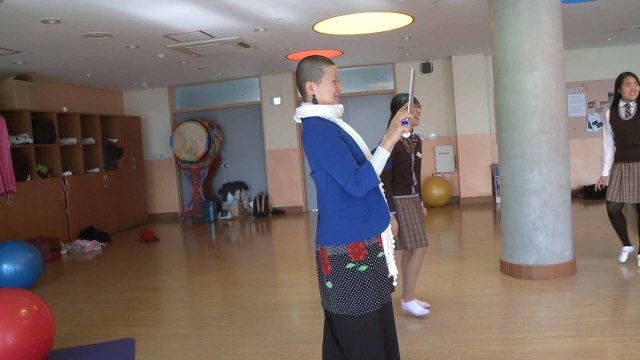










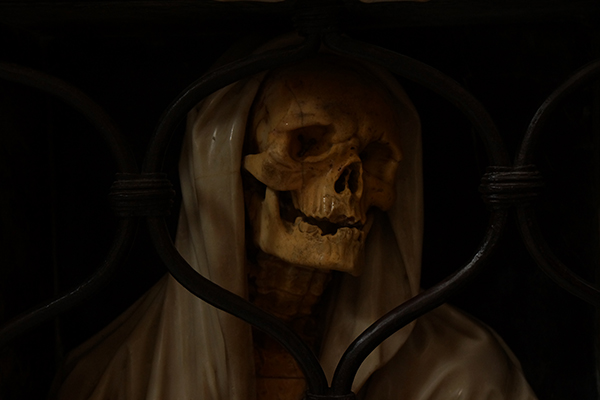


















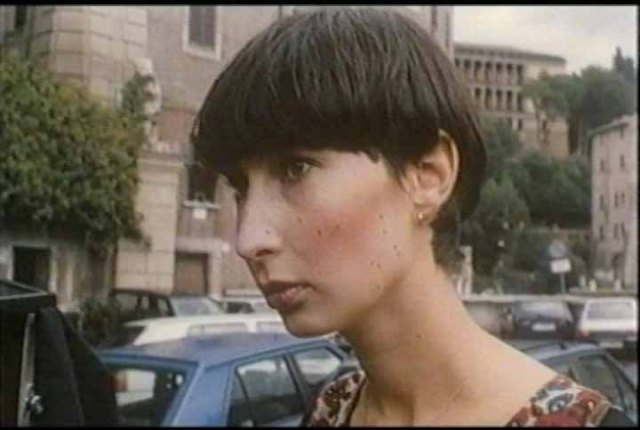



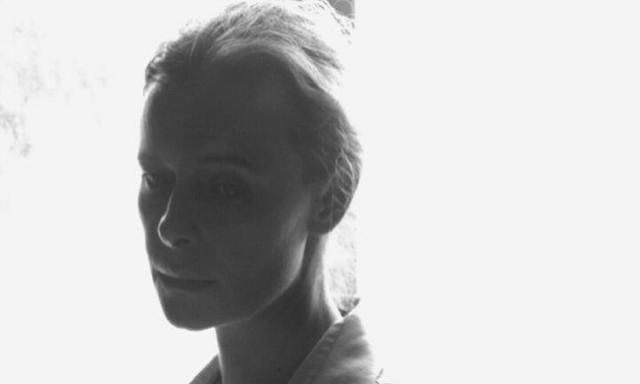
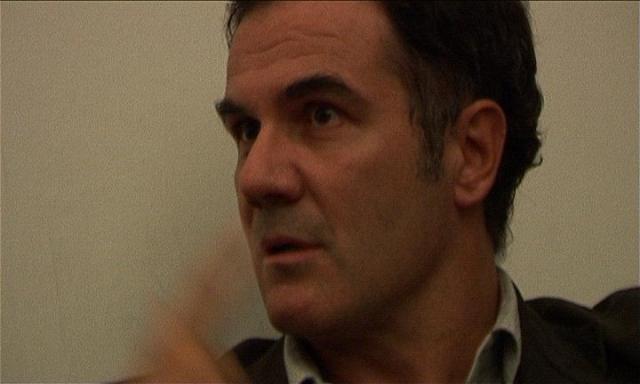



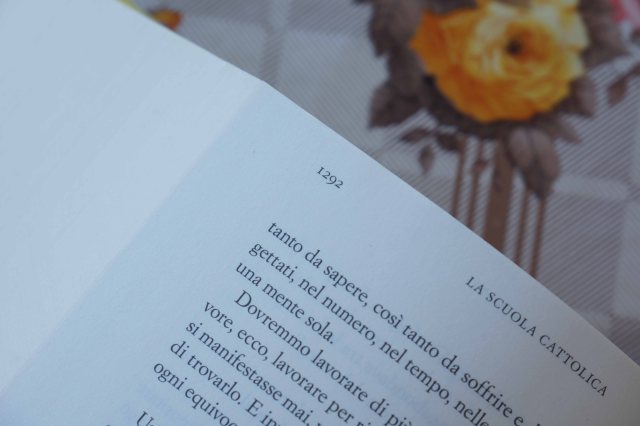 I
I